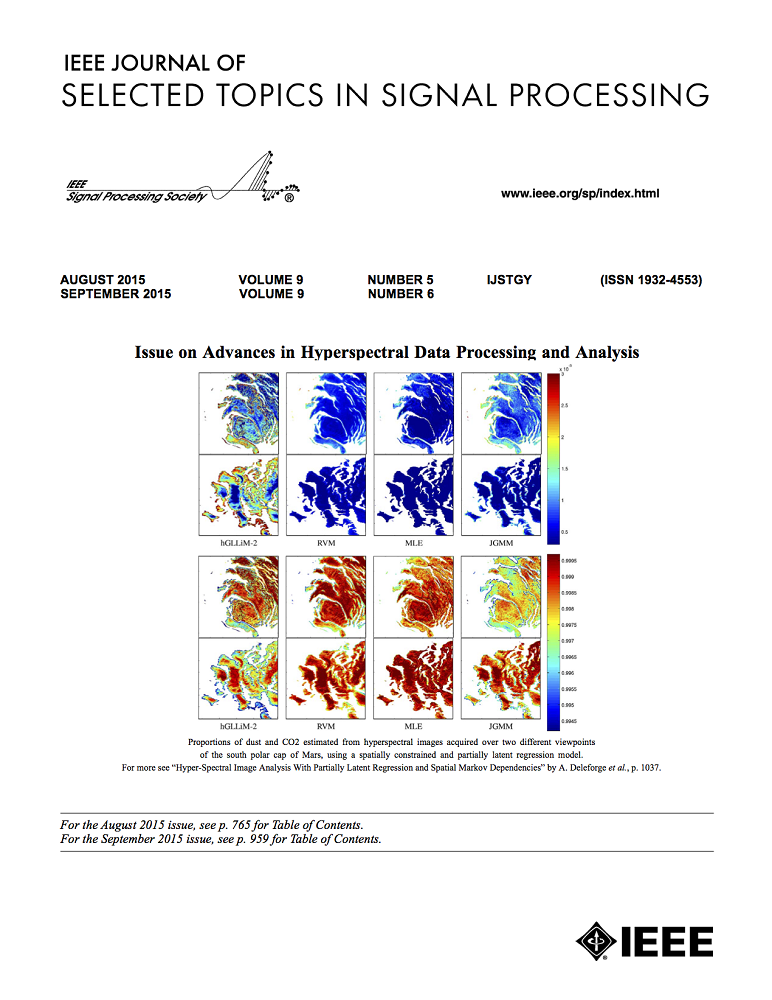基于分数啁啾率的低轨道卫星物联网上的CSS划分多址接入
IF 8.7
1区 工程技术
Q1 ENGINEERING, ELECTRICAL & ELECTRONIC
IEEE Journal of Selected Topics in Signal Processing
Pub Date : 2024-08-30
DOI:10.1109/JSTSP.2024.3451290
引用次数: 0
摘要
近地轨道卫星为地面物联网与卫星物联网的融合带来了新的机遇。由于其对大时延和多普勒频移的高鲁棒性,啁啾扩频(CSS)调制,即远程(LoRa)的关键技术,有望增强卫星链路。然而,LoRa采用的ALOHA协议将不可避免地导致卫星信道上的碰撞。本文主要研究了基于CSS的低轨道卫星物联网(LEO satellite IoT)上并发上行传输。仔细分析了啁啾率与扩频因子(SF)之间的关系。然后,我们提出了基于分数阶啁啾率的CSS调制,并支持地面用户在相同顺位下实现非正交多址,保证了用户具有相同的抗噪能力。我们推导了同步和异步场景下的误码率。通过仿真验证了该方案的性能。结果表明,该方案能够在保持良好误码率的同时实现多址接入,并且在异步场景下具有较强的鲁棒性。此外,我们使用现场可编程门阵列(FPGA)器件构建硬件系统来验证该系统的可行性。本文章由计算机程序翻译,如有差异,请以英文原文为准。
Fractional Chirp Rate Based CSS Division Multiple Access Over LEO Satellite Internet-of-Things
Low earth orbit (LEO) satellites are bringing new opportunities for the integration between terrestrial Internet-of-Things (IoT) and satellite IoT. Due to its high robustness against large time delays and Doppler shifts, chirp spread spectrum (CSS) modulation, i.e., the key technology of the Long-Range (LoRa), is expected to empower the satellite link. However, the ALOHA protocol employed by LoRa will inevitably lead to collisions over the satellite channels. In this paper, we focus on the concurrent uplink transmission over the LEO satellite IoT, which is based on CSS. We carefully analyze the relationship between the chirp rate and its spreading factor (SF). Then, we propose the fractional chirp rate based CSS modulation, and support terrestrial users to achieve the non-orthogonal multiple access with the same SF, which ensures that the users possess the same noise immunity. We derive the bit error rate (BER) for both the synchronous and asynchronous scenarios. The performance of our scheme is tested by simulation. Results show that our scheme can achieve the multiple access while maintaining a satisfactory BER performance and is robust over the asynchronous scenario. Furthermore, we build a hardware system using the field-programmable gate array (FPGA) devices to validate the feasibility of this system.
求助全文
通过发布文献求助,成功后即可免费获取论文全文。
去求助
来源期刊

IEEE Journal of Selected Topics in Signal Processing
工程技术-工程:电子与电气
CiteScore
19.00
自引率
1.30%
发文量
135
审稿时长
3 months
期刊介绍:
The IEEE Journal of Selected Topics in Signal Processing (JSTSP) focuses on the Field of Interest of the IEEE Signal Processing Society, which encompasses the theory and application of various signal processing techniques. These techniques include filtering, coding, transmitting, estimating, detecting, analyzing, recognizing, synthesizing, recording, and reproducing signals using digital or analog devices. The term "signal" covers a wide range of data types, including audio, video, speech, image, communication, geophysical, sonar, radar, medical, musical, and others.
The journal format allows for in-depth exploration of signal processing topics, enabling the Society to cover both established and emerging areas. This includes interdisciplinary fields such as biomedical engineering and language processing, as well as areas not traditionally associated with engineering.
 求助内容:
求助内容: 应助结果提醒方式:
应助结果提醒方式:


